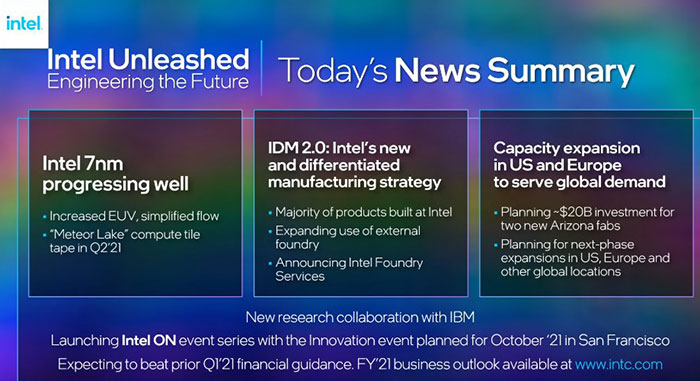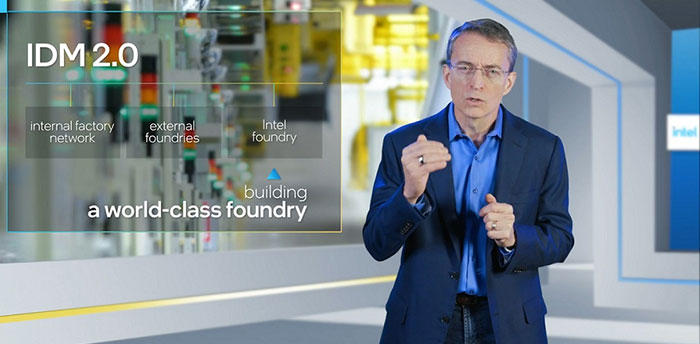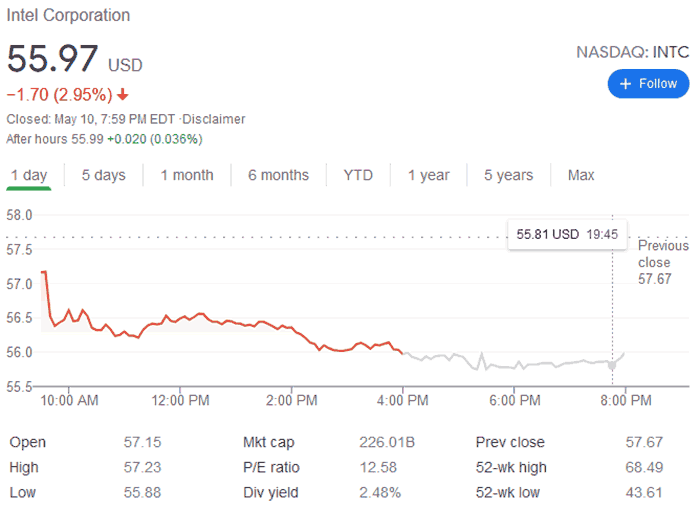During the Intel Unleashed: Engineering the Future webcast in late March there were lots of exciting plans laid out by Intel. The event helped signal the direction that new CEO Pat Gelsinger wanted to chart for the US chip making icon, once often referred to as Chipzilla. It certainly seemed like Chipzilla had got a new set of teeth.

The backbone of the presentation was the news about IDM 2.0, Intel's plans to reinvest in the foundry business. This activity would be complemented by "a world-class foundry business" dubbed Intel Foundry Services (IFS), to sell "leading-edge process technology and packaging" services to third parties. Other important parts of the Intel Unleashed: Engineering the Future webcast were reassurances that Intel 7nm was "progressing well" and the ambitious aim to progress from Tiger Lake, Alder Lake, Meteor Lake then move once more to a tick-tock process-refinement advancement model. Last but not least, Gelsinger pleased techies by announcing the new Intel ON annual innovation event, made largely from the mould/spirit of IDF.

It might be easy to get swept away with the enthusiasm and positive plans outlined by the new CEO Pat Gelsinger. However, a research note shared by Atlantic Equities analyst Ianjit Bhatti on Monday wasn't so upbeat. In brief, Atlantic cut its Intel price target to $45, from $63. This note is reportedly largely responsible for the ~3 per cent Intel share price drop seen yesterday. At approx $56 at the time of writing, Intel shares are still quite a lot higher than the revised price target.

Intel shares have continued to decline in afterhours trading
Central to Bhatti's reasoning for the revised price target is that the IDM 2.0 strategy "does nothing to address continuing market share losses to AMD". Furthermore, the analyst sees AMD as the new preferred [processer] supplier to most cloud customers for new workloads, Intel's ASP is dropping as it loses the high-end, and Intel is still experiencing supply issues which will stretch at least until H2 this year. Intel's grip on systems making partners has at last seemed to loosen in the last few months and a good place to see this shift is the gaming and high-end laptop market. On the positive side of things, it is admitted that IDM 2.0 might actually be the best long term strategy for Intel.
Barron's report on the Atlantic Equities research note, offers some further interesting comments by Northland Securities analyst Gus Richard. Northland reiterated its $42 price target for Intel on Monday. "Intel is not dead, just severely wounded from self-inflicted injuries over the last couple of decades," Richard opined. Fixing Intel is "going to take 3-to-5 years if they are lucky," added Richard, and during this process it will be a painful place to be for investors.






